Patchwork pillows

In an interesting patchwork style, a huge number of things are made for interior decoration. For example, pillows can be used to decorate any room. The most popular are the patchwork cushions. Let's see how to create swatches in this style.
Style features
Patchwork - a special patchwork technique... This is the direction of modern needlework, in which products are created from pieces of fabric of different colors... This kind of sewing appeared out of need. In ancient times, people did not always have the opportunity and funds to buy clothes or things, but to sew them yourself from pieces of fabric was a good way out.
A wide variety of fabrics were used for work: old clothes, home textiles and even knitted shreds.
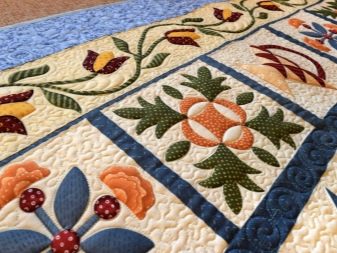
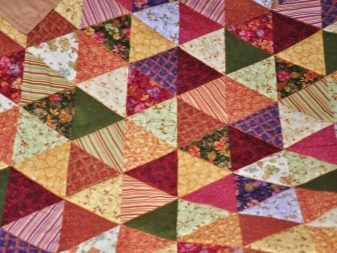
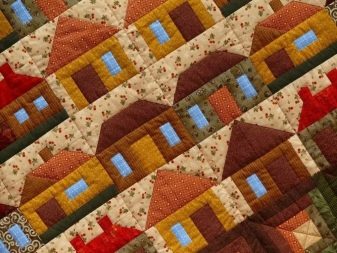
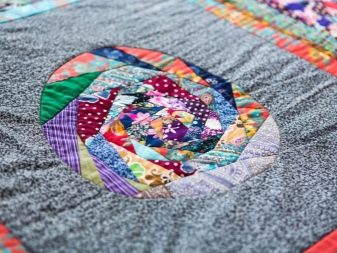
The technique is the process of joining pieces of fabric into a single fabric. Despite its popularity all over the world, patchwork has its origins in the American interior. There are many types of patchwork, each with its own characteristics.
- English technique... The shapes are arranged according to patterns of the same size and shape. This type has a clear geometry. Triangles, squares, rectangles will do. The colors are always discreet. Typically 2 colors are used. The finished product turns out to be simple, laconic and very modest, which suits the interior of noble people in England.
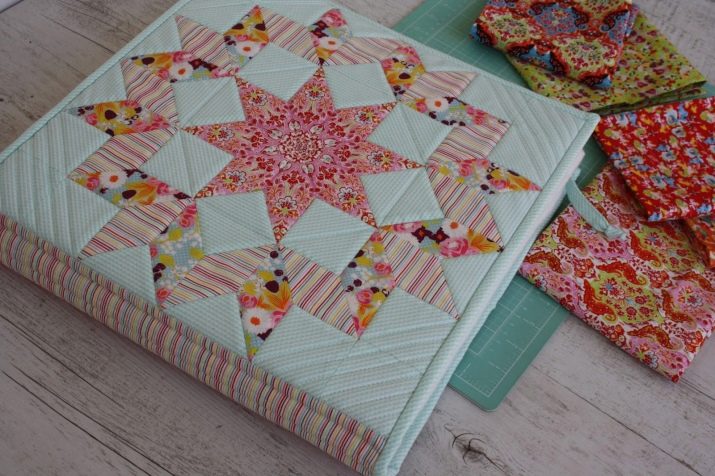
- Classical technique. Very similar to English. The difference is that for the classics, square pieces of fabric are used. For beginners, this direction is most suitable.
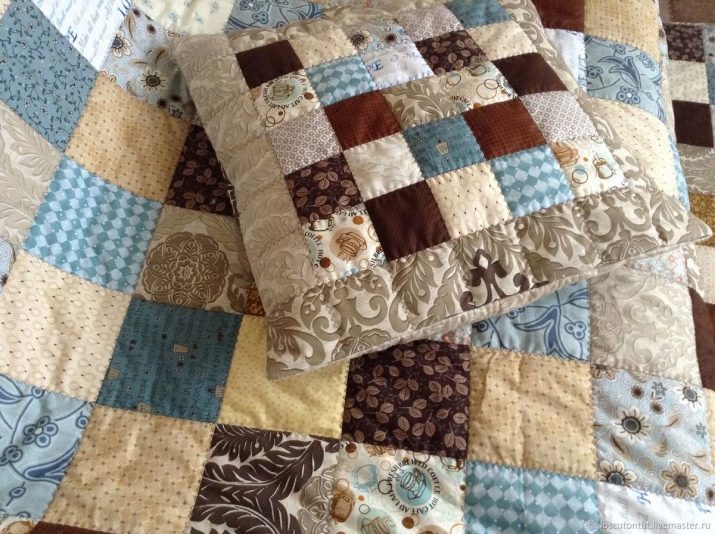
- Crazy technique... The only rule - no rules, the name itself translates as "crazy".Crazy products are extravagant and shocking. The main feature is hidden seams, which can be decorated with beads, braid, lace.
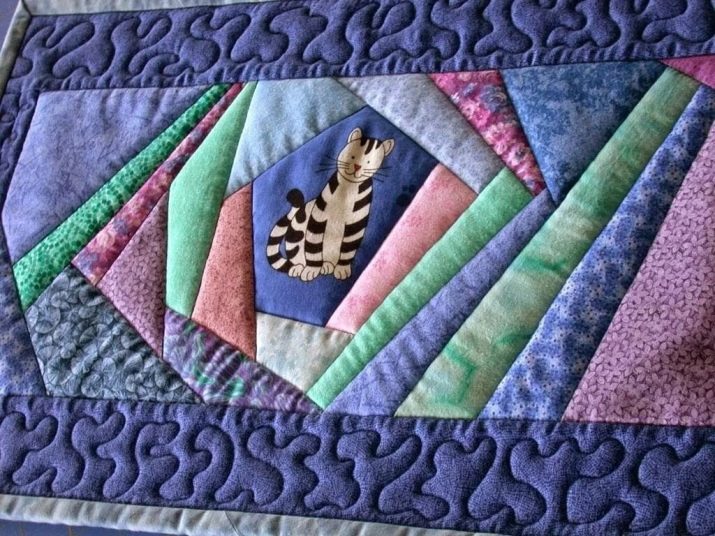
- Eastern technology. Differs in bright colors. Classic shapes and smooth lines can be combined. The peculiarity of the technique is all kinds of jewelry, beads, stones, embroidery, tassels, fringes. Mainly silk is used from fabrics.
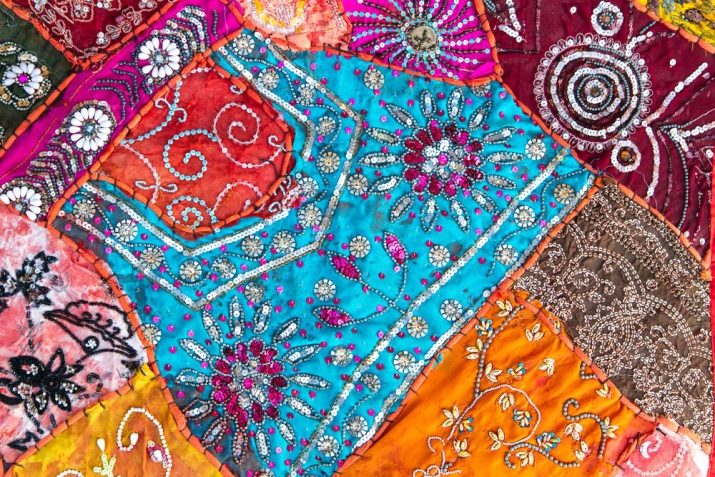
- Japanese technique... It is the most difficult type of patchwork. Japanese craftsmen use pieces to create drawings, plots and even full-fledged paintings that can be exhibited in museums. Hand sewing and complex types of stitches are traditional for this technique.
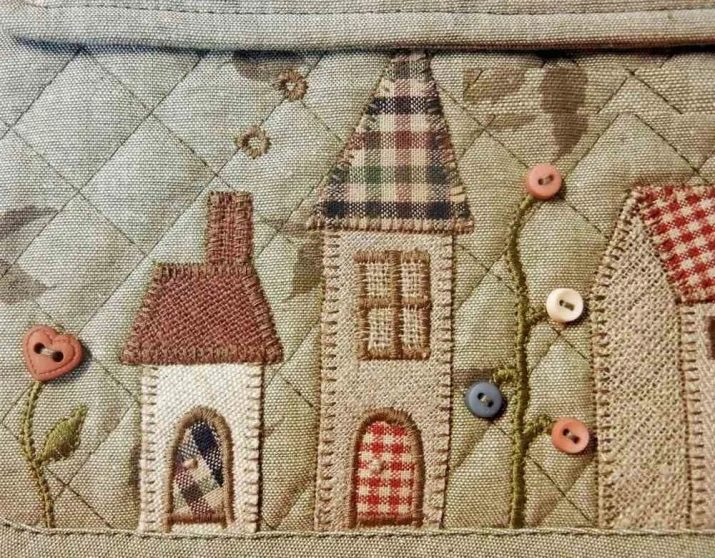
- Knitting technique is combined... In this case, the pieces of fabric are tied or joined together with yarn. The patchwork can be fully knitted. Each piece is knitted by hand. This subspecies does not require special tools; it is crocheted or knitted.
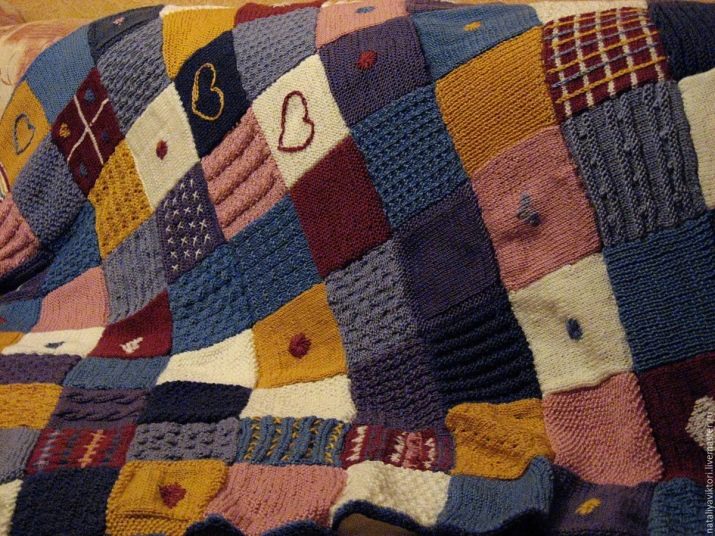
- Quilting. Another of the areas of patchwork sewing. It has some differences from patchwork: layering, volume of products and a combination of different types of stitches.
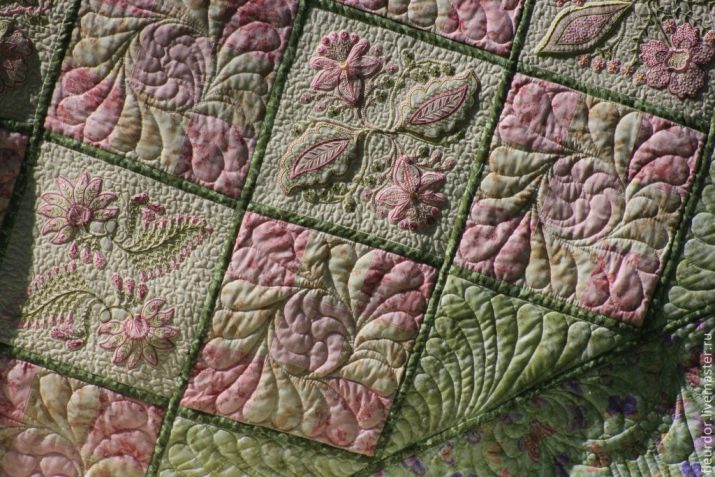
How to choose a material?
It is more convenient to purchase special fabrics for patchwork techniques. They practically do not wrinkle, do not fade and do not shrink when washing. Most importantly, they are beautiful and bright.... Before starting work, it is advisable to wash the material in order to prevent possible shrinkage in the finished product.
The fabric must be ironed.
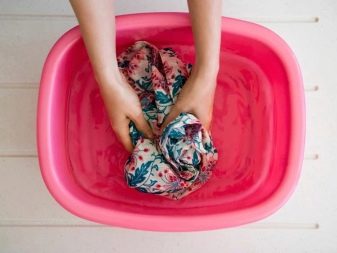
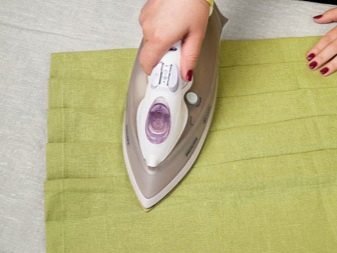
It is better not to take fabrics dyed with unstable dyes, which will fade in the future. If such material does get into the product, a good solution would be to combine it with dark fabrics so that no shedding traces can be seen. You can use different materials.
- Cotton fabrics remain the most traditional and customary for patchwork. They are convenient for novice craftsmen: cotton fabric scraps are easier to iron, the pieces practically do not crumble, and it is easy to work with them. And you can also use chintz fabrics, which differ in their color variety.

- Working with silk fabrics requires skill and considerable skill. Despite the beauty and luxury of silk pillows, this fabric has a number of disadvantages: the fragility and high cost of the material. Silk is used mainly for sewing clothes, since it is not a practical material at all in the interior. But there is an exception: in the oriental style, interior details are used only from silk fabrics.

- Fabrics from flax the most practical and convenient to work with. But they have strong crease and can shrink a lot.
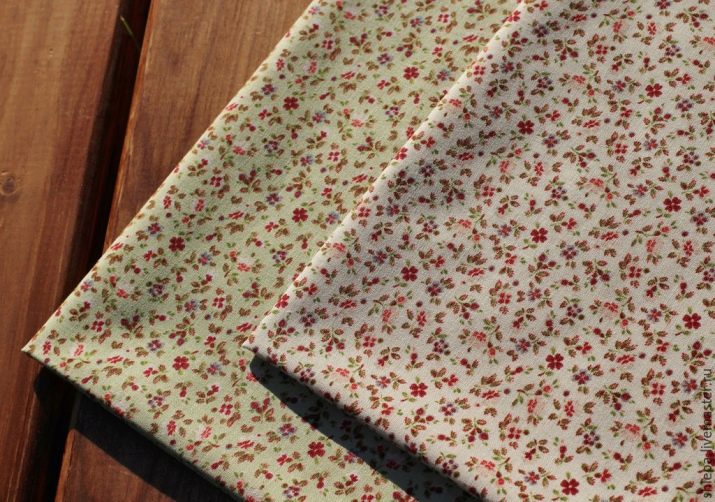
- Wool fabrics will be the ideal solution for sewing blankets or blankets. Good quality wool is practically wrinkle-free, resistant to dirt, but not easy to work with.
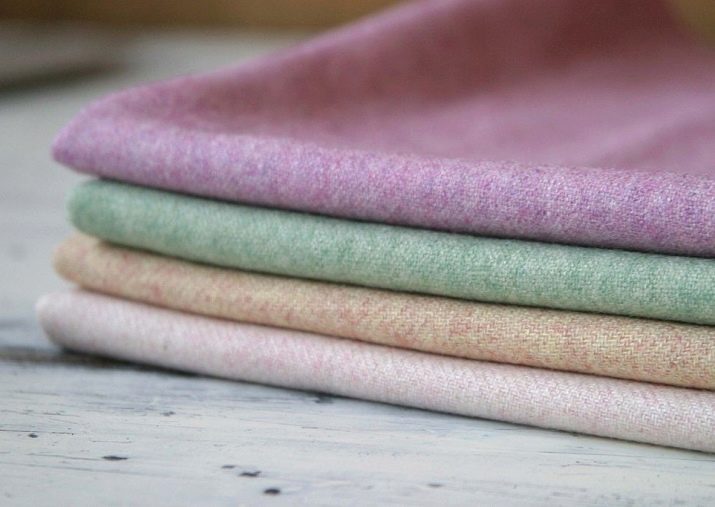
- Drap is the most resistant fabric. Does not wrinkle or crumble during operation, and also does not fade in the sun. Warm and windproof material that is perfect for creating outerwear and blankets.
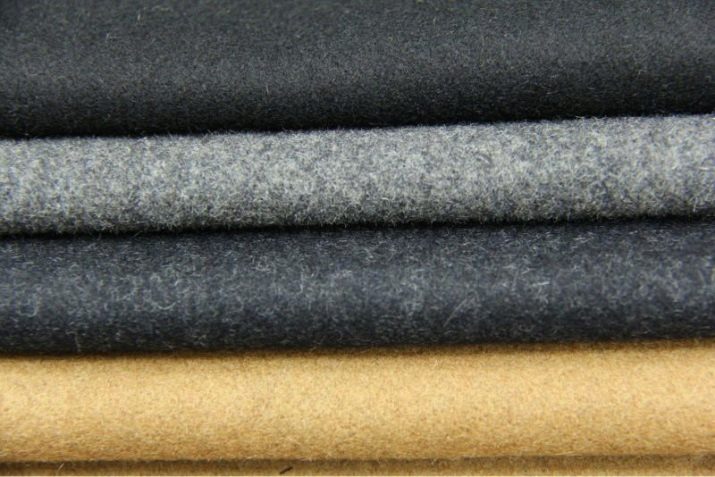
- Denim also one of the good materials for patchwork. The features of this fabric will hide all the flaws of even a not very well-made product, which is very important for beginners.
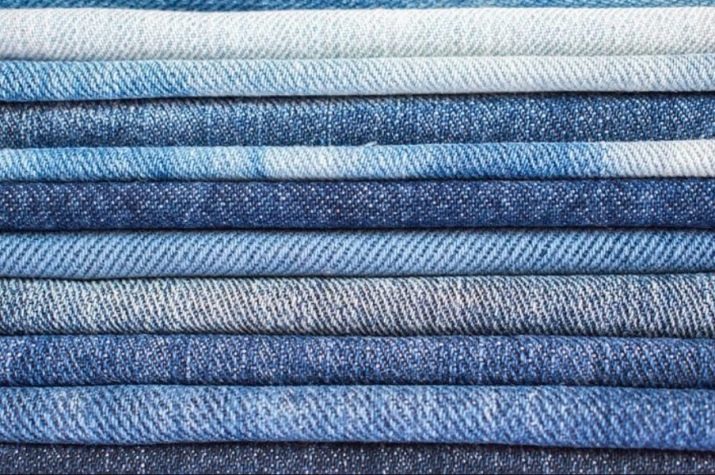
How to match fabrics?
The main rule when choosing fabric is colors and patterns should be in harmony, not clog each other or merge. One of the best options is to buy ready-made kits of material, but you can also try to pick the shades yourself using the color chart. It is important that the fabrics match.
By color and pattern
Patterns and prints are combined with plain fabrics and with each other. In order for the finished work not to look ridiculous, the drawings must correspond to the size of the flap. A small piece should be decorated with a small pattern. Peas, stripes, goose feet, cages, herringbone and abstract patterns always look great. But it is better to refuse rags with large pictures. There are 3 color matching tricks you can use:
- find a suitable palette in a magazine or online and stick to color combinations;
- select the rest of the fabrics to the main material of the product;
- the fabric can be looked up on the manufacturer's website and there you can also see other products that will perfectly match the color.
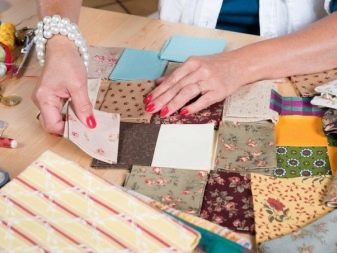
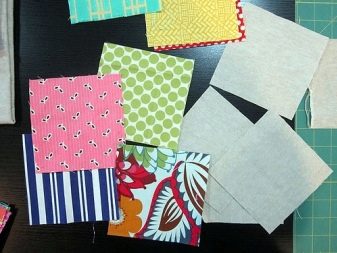
By invoice
So that the finished product does not resemble a gypsy tent in its appearance, you need to very skillfully combine fabrics. Wool and silk are unlikely to look good together. But, for example, for kitchen oven mitts, using a thicker fabric on one side and a thinner one on the other is an ideal solution.
A product that will be used often is best made of fabrics of the same structure, so that in the future, thinner flaps do not wear out so quickly.
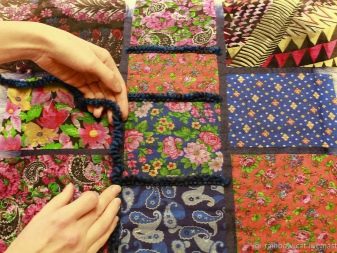
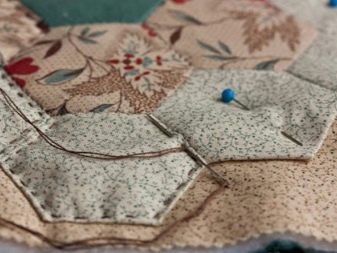
Master class for beginners
Making a DIY pillow is easy if you use a step-by-step description. There are many sewing techniques. Having tried some of them, every novice master can find one that will become ideal for him.
- Well technique - a block in this style is made in a clockwise spiral. The seams are ironed to one side.
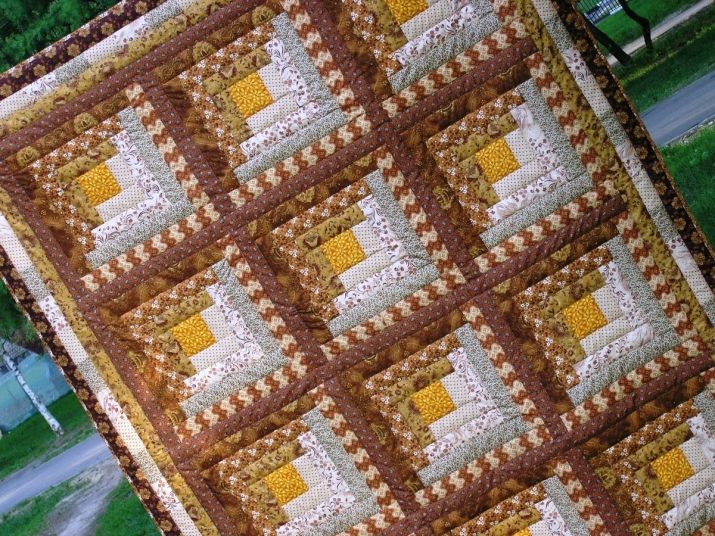
- Borough - resembles a patch of patches. The flaps are sewn onto the base in a chaotic manner with large stitches.

- Technique pizza - good for novice craftsmen. You will need hot melt glue for the fabric. The base is sprinkled with it, flaps are laid out on top, then the product is ironed through paper or fabric.
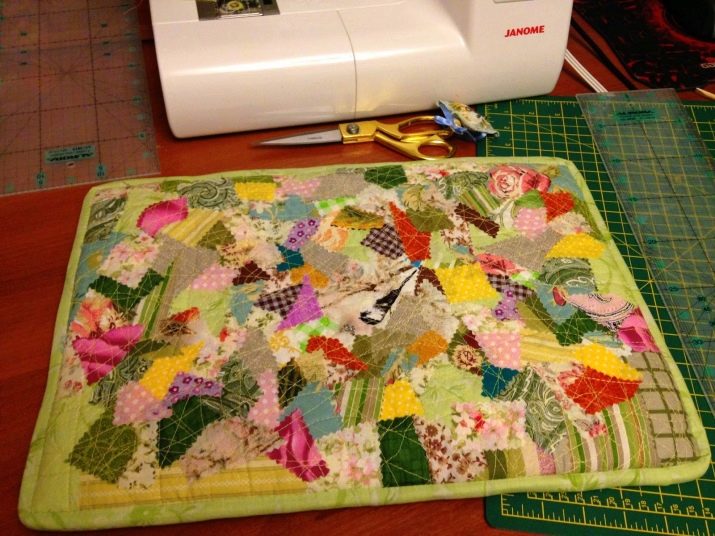
- Russian square - strips of fabric are stacked in rows, sewn through the tops, a rhombus is sewn into the middle.
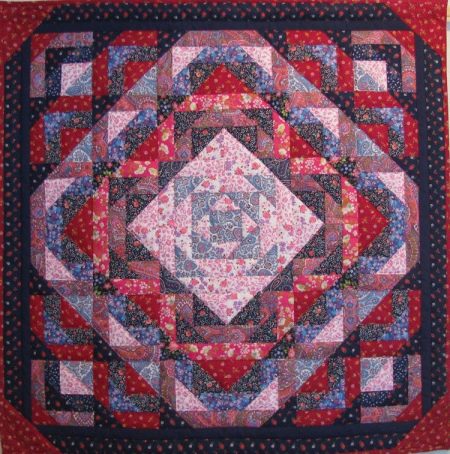
- Honeycomb... The technique first appeared in England. For stitching, you need equilateral pentagons.
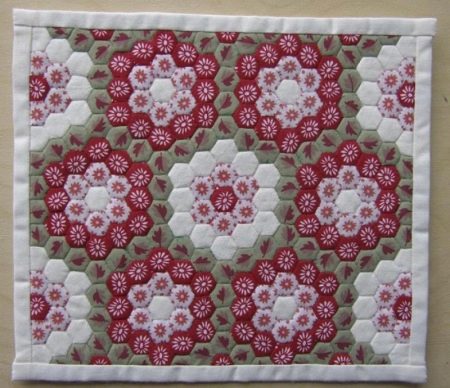
- Patchwork corner - squares of fabric are folded into a triangle and connected in a spiral.
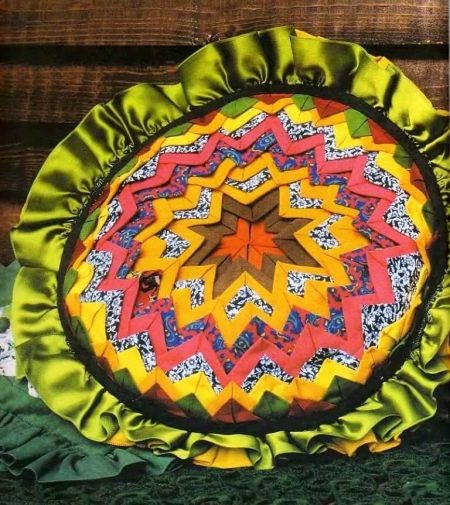
- Strip to strip technique - pieces of fabric are sewn into small blocks, and a canvas is made from the blocks.
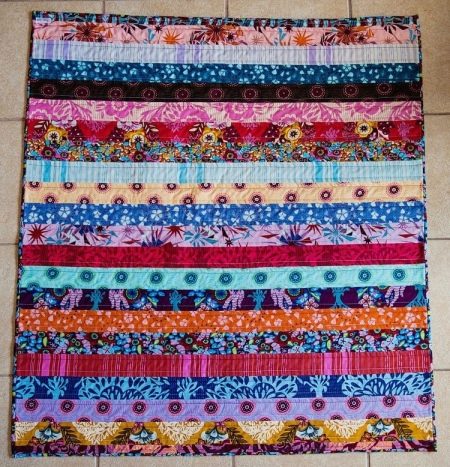
- Watercolor - you will need materials in bright and neutral colors. The first will serve as a pattern, the second - as a background.
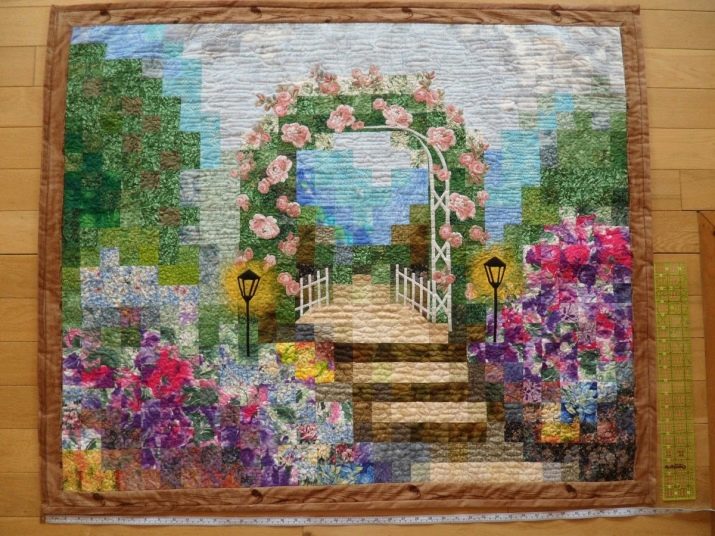
- Lyapochikha - strips of fabric are sewn in the middle, the edges remain free to create volume.
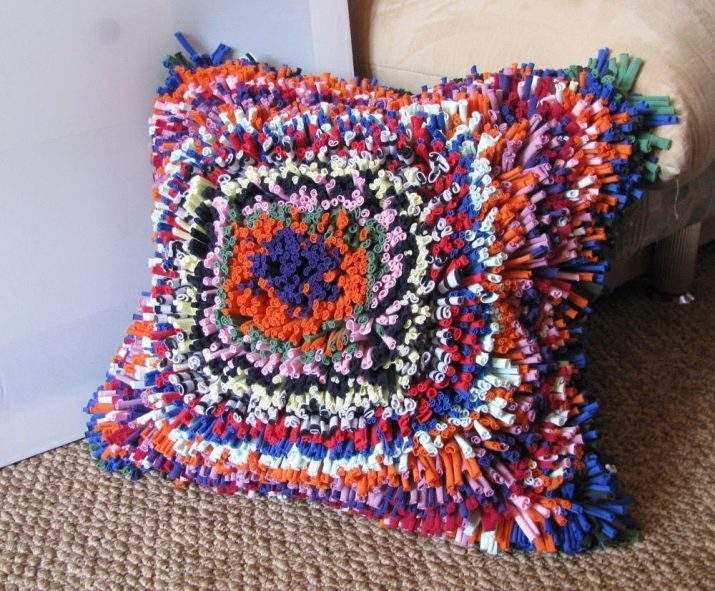
- Free technique - a square piece is sewn into the middle, and triangular pieces go from it in a circle.
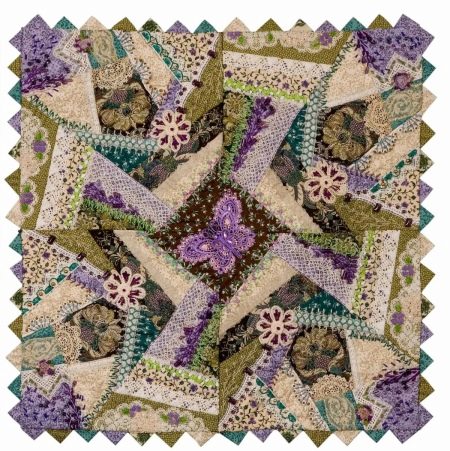
- Log hut - similar to free technique, but instead of triangles, rectangular stripes are sewn.
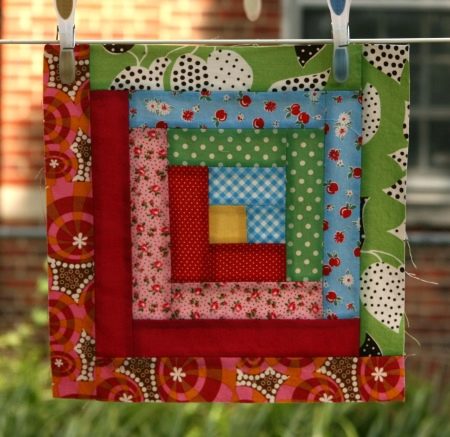
- Grandma's garden - based on the honeycomb technique, but with a special emphasis on color. One row of pentagons in neutral color, the next row in bright colors.
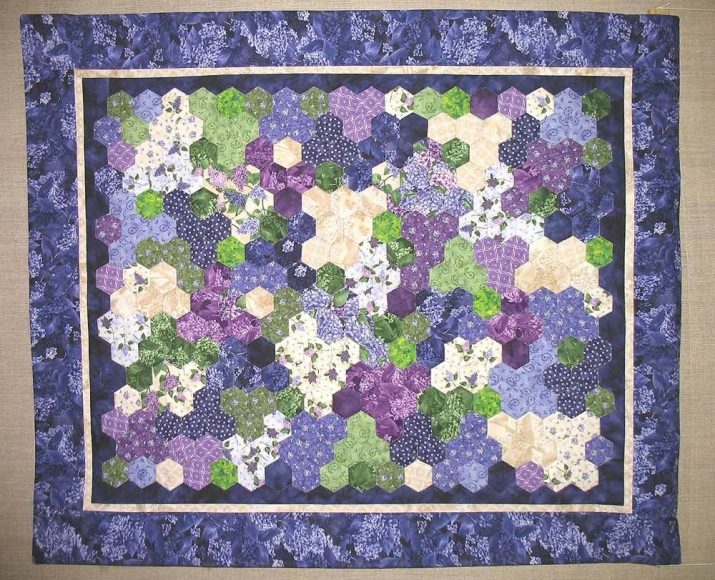
- Quick squares - triangles are connected into squares, squares - into a single canvas.
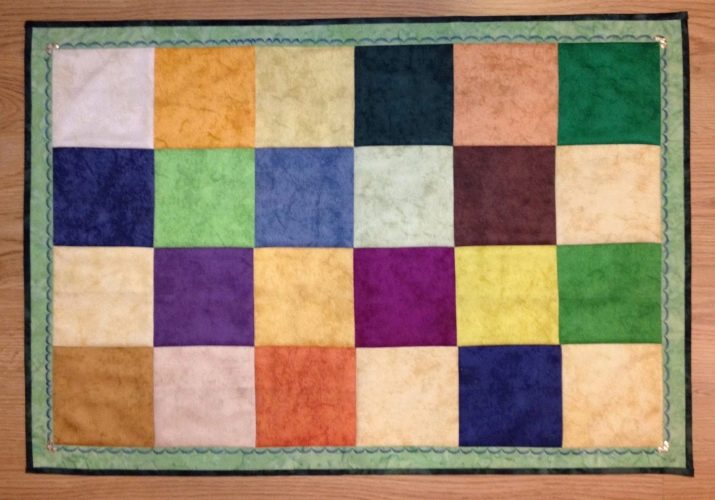
- Jacob's ladder - the canvas is created from triangles and squares, which form a single line diagonally.
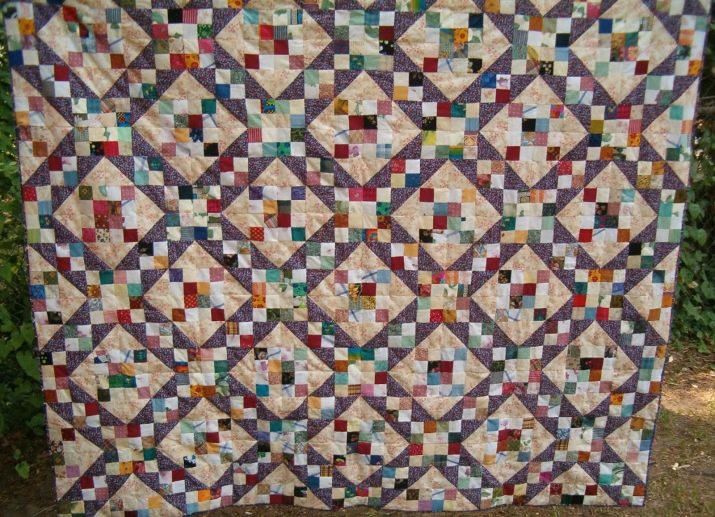
- Triangles - the product is made of triangles that are sewn in any order.

- Bargello - the work is quite complicated, the flaps are sewn together so that a pipe is formed, then the whole structure is cut into transverse strips so that a stepped pattern comes out. In the last step, the elements are stitched together.
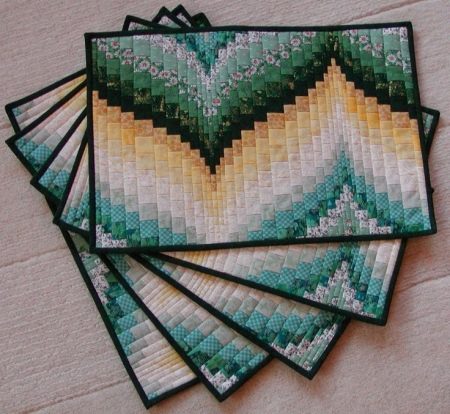
- Japanese technique - paintings are created. Usually the work takes place according to the sketch.
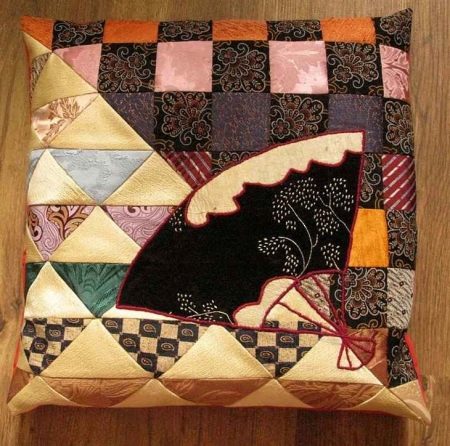
Sketching
An important step in patchwork is the preparation of the circuit. For novice craftsmen, the best option would be to search for ready-made sketches with a detailed description.
In order for the flaps to be the same in shape and size, special layouts are used.
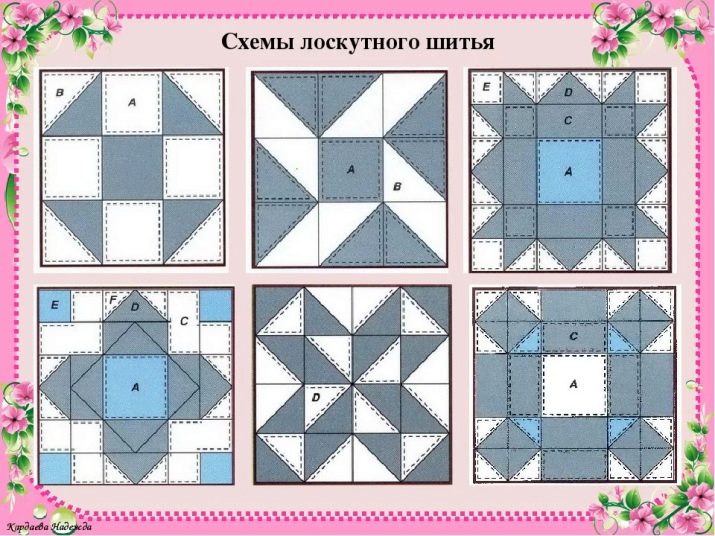
Pattern preparation
When preparing details, you need to remember about seam allowances and cut out flaps with a margin. However, parts with a margin are not cut out of thick and dense material, so that excess fabric does not puff up.
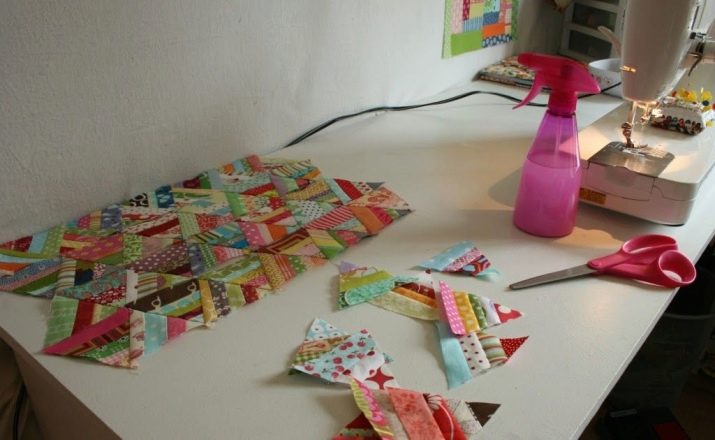
Assembling parts
The canvas should be started from small parts, gradually moving to large ones. The flaps are folded together right-side up and held together with pins. For beginner needlewomen, first it is better to sweep the parts by hand, and then on a typewriter in order to make fewer mistakes.
The seams are ironed to one side.
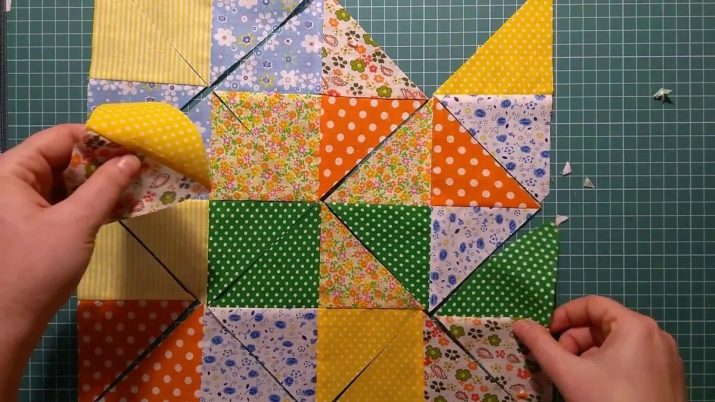
Pillow Design Ideas
There are a lot of options for making pillows for a sofa in needlework.First, a pillowcase is created, then it is stuffed with filler. A lot depends on which filler you choose: whether the pillow will retain its shape, whether it will cause allergies in young children, how it will have to be looked after. It is best to choose synthetic fillers (expanded polystyrene, foam rubber or synthetic winterizer), but you can also use natural ones (down or feathers).
It is better not to use cotton wool and hay, because it will be uncomfortable to sleep, and the pillow will quickly deteriorate.
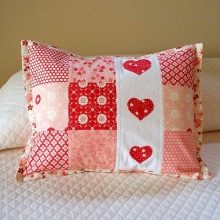
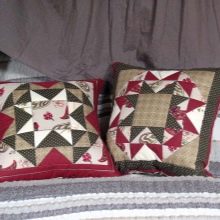
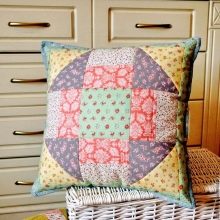
The main point in the manufacture of a pillowcase is to apply a pattern to the fabric, then flaps of the material are sewn onto it. There are many interesting design ideas.
- Classic or traditional pillow... From square or rectangular scraps, a product is created that will be in harmony with the tone of the furniture. Old curtains or sofa upholstery work well for sewing.
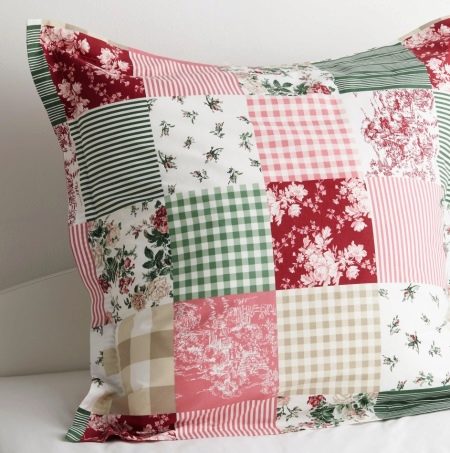
- Knitted pillow... The master creates a pattern for the main part, makes the sides in a circular knitting method.
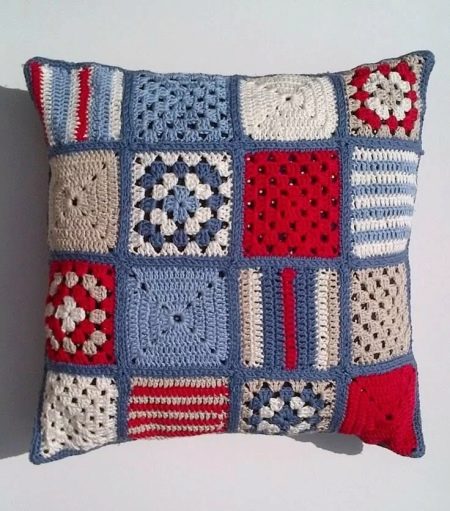
- Denim pillow... Using a variety of blue and light blue denim shades can be a very interesting pillow idea.
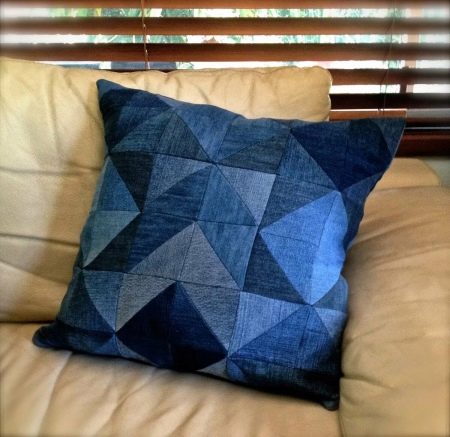
- Round pillow. It is much more difficult to make such a product than an ordinary square pillow. Classic ideas for a round shape are a Dresden plate and chrysanthemum petals.
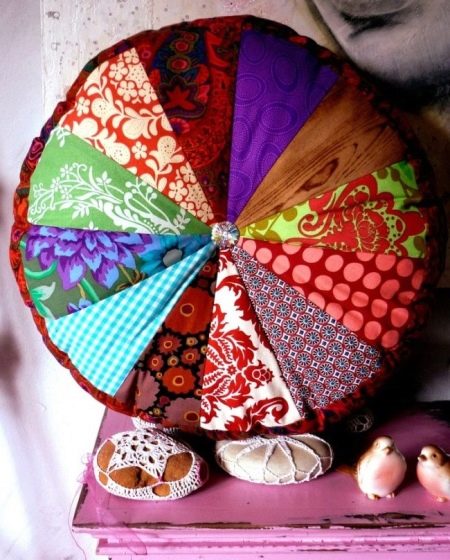
- Decorative pillows in the shape of a star are sewn from triangles... The shape is perfect for embroidery decoration. It will be interesting to look at a set of several products for a children's room, supplemented by a month.

- Chair cushions differ from other products only in a smaller amount of filler.
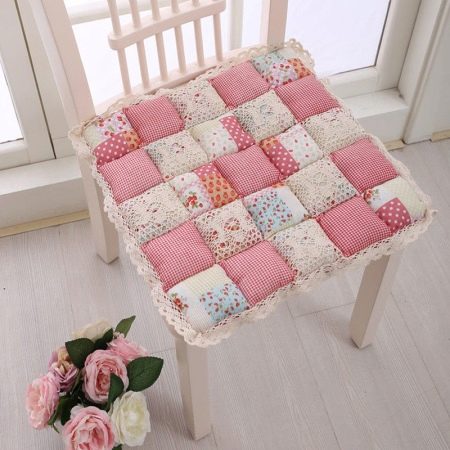
- Pillows in the shape of animals or decorating a finished pillowcase with appliques look beautiful... For example, a cat's face, which is sewn from several blocks or cut out with a single flap.
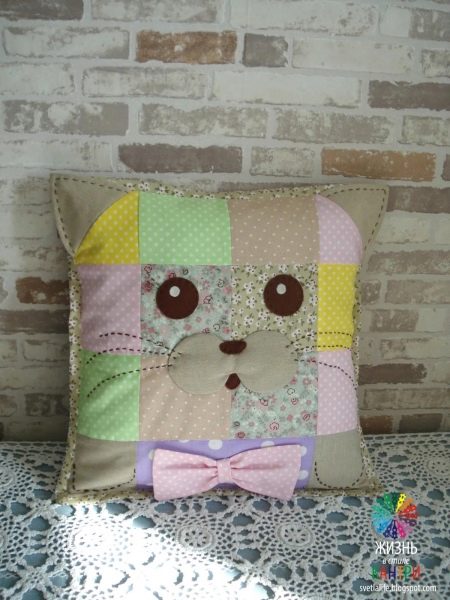
Beautiful examples
There are no big difficulties in creating a patchwork pillow, you just need to be patient for such a painstaking work. An interesting example would be the Dresden plate. Consider a small master class on this technique.
- The first step will be selection of fabric, it is better to take from 5 to 8 colors.
- Templates are drawn... It is important that their dimensions should correspond to the dimensions of the future product. They look like a round center and drop-shaped petals.
- The next stage of work is this is a pattern of details. They are cut out already taking into account the allowances, usually 1-1.5 cm.
- Now you can stitch together petals. Pieces of fabric are folded right side in, and a machine stitch is made from the middle. Novice craftsmen use one trick: a template without allowances is laid on a flap and outlined with chalk - a line is obtained along which the line will pass. It is convenient, and the ability to flash crookedly is minimized.
- The petals are connected now a circle is sewn into the center, and the product takes the shape of a flower.
- The flower is sewn onto a square pillowcase. For originality, the perimeter of the pillowcase can be decorated by adding stripes along the edges, alternating between narrow and wide pieces of fabric. 4 contrasting squares are added to the corners.
- The final stage - the pillow is stuffed with padding polyester.
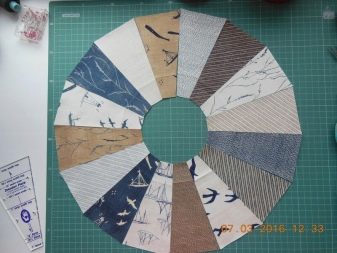
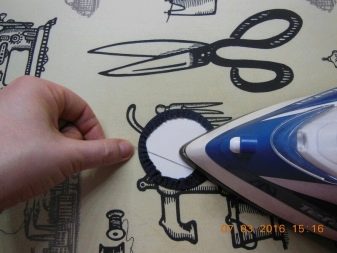
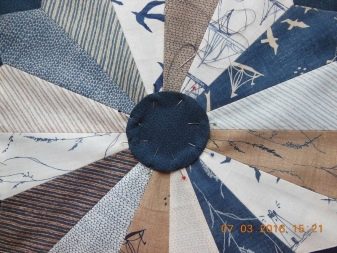
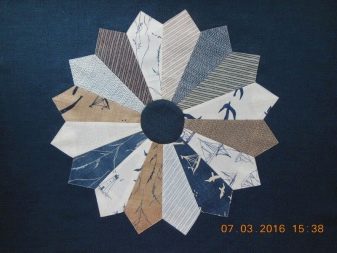
For information on how to make a patchwork pillow yourself, see the next video.








